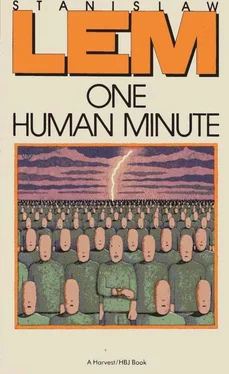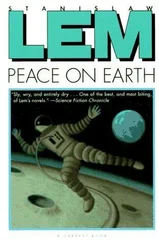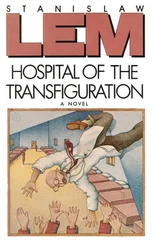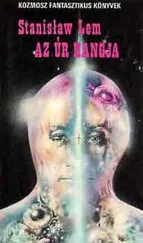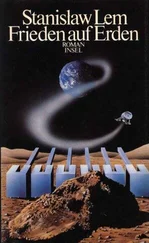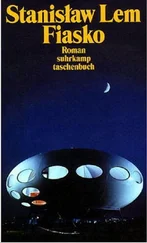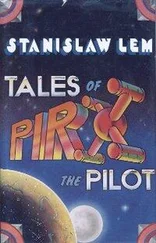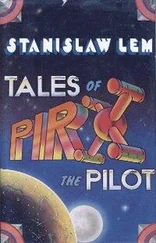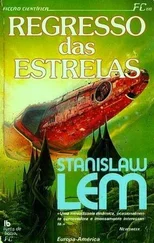Nevertheless, cosmological work on the Milky Way is getting closer and closer to the true state of things. Stars are born mainly inside the spiral arms; supernovas explode most frequently inside those arms; the Sun is definitely located near the corotational circle, therefore not just “anywhere” in the Galaxy — because, as was shown, the conditions prevailing in the corotational zone are different both from those near the nucleus and from those on the edges of the spiral disk.
With computer simulation cosmologists will be able, in a short time, to consider a multitude of variations of star and planetary formation, which not long ago was extremely tedious and time-consuming work. Meanwhile, observational astrophysics is providing new and more precise data for these simulations. The investigation, however, is still in progress; the material evidence and the mathematical guesswork, pointing to the Perpetrators, have acquired the force of a solidly based hypothesis. These are not groundless speculations. The indictment of the spiral nebula for being both mother and infanticide has been placed before the tribunal of astronomy. The trial goes on; the final verdict has not yet been reached.
In a discussion of the history of our solar system in the Galaxy, it is suitable to use legal terminology: cosmology, engaged in the reconstruction of past events, acts like an examining magistrate in a case where there is no hard evidence against the accused, only a set of incriminating circumstances. The cosmologist, like the judge, tries to determine what happened in a given concrete instance. He does not have to worry about how often such an instance may occur or what the probability of its occurring was. But in contrast to the judiciary, cosmology tries to learn much more about the matter. If a champagne bottle — with thick glass and the characteristic hollow at the bottom — is thrown out the window and breaks, then by repeating the experiment we will see that the neck and the bottom usually end up in single pieces while the rest of the glass breaks into many fragments of different shapes.
There is no precise answer to the question of how often, in breaking bottles, one can obtain exactly the same fragments. One can establish only how many pieces the bottles break into most often. Such a statistic is easily arrived at by repeating the experiment many times under the same conditions (the distance the bottle falls, whether it falls on concrete or wood, etc.). But it may also happen that the bottle, in falling, will hit a football kicked by one of the children playing in the yard, will thus bounce and fly through the window of the elderly lady on the floor below who keeps goldfish in an aquarium, will fall into the aquarium, sink, and fill with water, unbroken. Everyone will agree that, although highly improbable, such an event is still possible; people will see it not as a supernatural phenomenon, a miracle, but only as an extraordinary coincidence.
Yet such coincidences cannot be put into statistics. Besides Newton’s laws of motion and the glass’s strength, one would have to take into consideration how often the children played football in the yard, how often the football collided with falling bottles during the game, how often the old lady left her window open, how often the fish tank stood near the window; if we wanted to have a “general theory of champagne bottles that fall into aquariums undamaged after being hit by footballs,” taking into account all the bottles, children, houses, yards, goldfish, aquariums, and windows in the world, we would never accomplish it with statistics.
The key question in re-creating the history of the solar system and life on Earth is: Did something happen on the order of simple bottle-breaking, which could be put into statistics, or was it, instead, something like the football and the aquarium?
Phenomena that are statistically calculable do not become statistically incalculable suddenly, at a well-defined boundary, but, rather, by degrees. The scholar takes a position of cognitive optimism; that is, he assumes that the subjects he studies will yield to calculation. It is nicest if they do so deterministically: the angle of incidence is equal to the angle of reflection; a body immersed in water loses exactly as much of its weight as the weight of the water it displaces; and so on. It is not quite so nice if calculable probability has to substitute for certainty. But it is not nice at all when absolutely nothing can be calculated. It is commonly said that when nothing can be calculated and nothing predicted, one has chaos. Yet “chaos” in the exact sciences does not mean that we know nothing whatever, that what we have to deal with is absolute disorder. There is no “absolute disorder.” Even in the tale of the bottle and the football there is no chaos. Every event, taken separately, obeys the laws of physics, and of deterministic physics, not quantum physics, because we can measure the force with which the child kicked the ball, the angle of impact between bottle and ball, the speed of both bodies at that instant, the path the bottle described when it bounced off the ball, and the speed with which it fell into the aquarium and filled with water. Each step of the sequence, taken separately, is subject to mechanics and statistics, but the sequence itself is not (that is, one cannot establish how often a thing that has happened will happen).
The point is that all theories of “broad scope” in physics are incomplete, because they say nothing about the initial states. The initial states have to be brought into the theory from the outside. It is obvious, however, that when some initial state must be achieved precisely by chance in order to produce the initial state of the next occurrence, also precisely defined, and so on, then a certainty that transcends the realm of probabilities becomes an unknown, about which nothing can be said except that “something very unusual took place."
That is why I said at the beginning that the world is a group of random catastrophes governed by precise laws.
To the question “How often does what happened with the Sun and the Earth happen in the Universe?” there is no answer yet, because we are not sure in which category of events to place the case.
With advances in astrophysics and cosmology the matter will gradually be clarified. Much that the experts said at the CETI meeting in Burakan in 1971 is now out of date or has been shown to be incorrect. In ten or twenty years, no doubt, many things that are mysterious today will be explained.
The Moon played a large if not decisive role in the emergence of life on Earth. Life could start only in aqueous solutions of certain chemical compounds, and not in the deep seas but in coastal shallows. The frequent but gentle mixing produced by the tidal ebb and flow caused by the Moon hastened the protobiogenesis in these solutions.
But less is known about how the moons of the planets came into being than about how the planets themselves formed. For now, one cannot rule out the possibility that the formation of planetary satellites is as “extraordinary” as the story of the bottle and the aquarium. An ordinary shock wave from a supernova seems sufficient to cause ring fragmentation of a protosolar nebular disk, but for moons to condense around planets, something like the intersection of two circular waves may be needed, as when two stones are dropped into water (not far apart) and the ripples radiate outward. In other words, for moons to form, a second supernova may be needed, also not far from the protosolar system.
If not all these questions are answered, there will still be some answers, and thus the probability of life’s arising in the Universe — the biogenetic yield or frequency — will acquire an approximate numerical value. The value may prove to be large, in which case we will be right to expect the presence of life in an innumerable wealth of forms on the multitude of planets in the trillion galaxies that surround us.
Читать дальше
